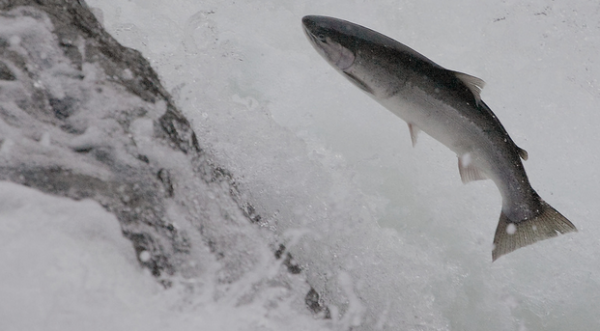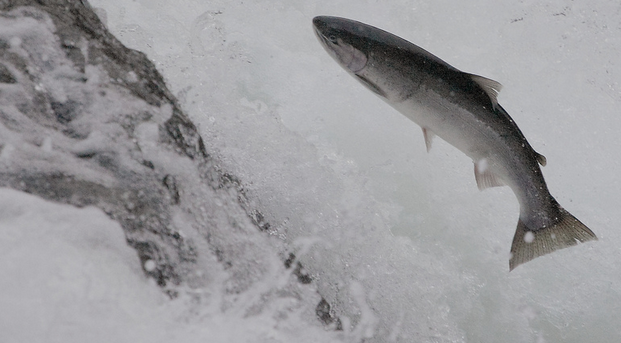
Wild steelhead ascending falls.
We begin with escapement because it is usually measured first, and then run size is calculated based on fish that were killed indirectly (e.g. catch-and-release mortality) or directly (e.g. harvested). While escapement can be measured with several methods, our focus here is on redd counts because they are a fairly common method.
Redds are nests dug by steelhead in stream gravel, and as anglers know, redds can be easily observed when they are fresh and water clarity is good. Redds are typically counted by surveyors who walk the stream, or float in boats, but they may also be counted by helicopter or airplane. The challenge with redd counts is they require good stream clarity and lots of labor because steelhead spawn in a variety of habitats and over a period potentially ranging 6-8 months (November-July depending on the watershed). This means managers have to come up with sample designs that allow them to survey certain stream reaches within a watershed on a regular interval. Typically those reaches represent a small proportion of the watershed. There is simply too much habitat for a complete census.


